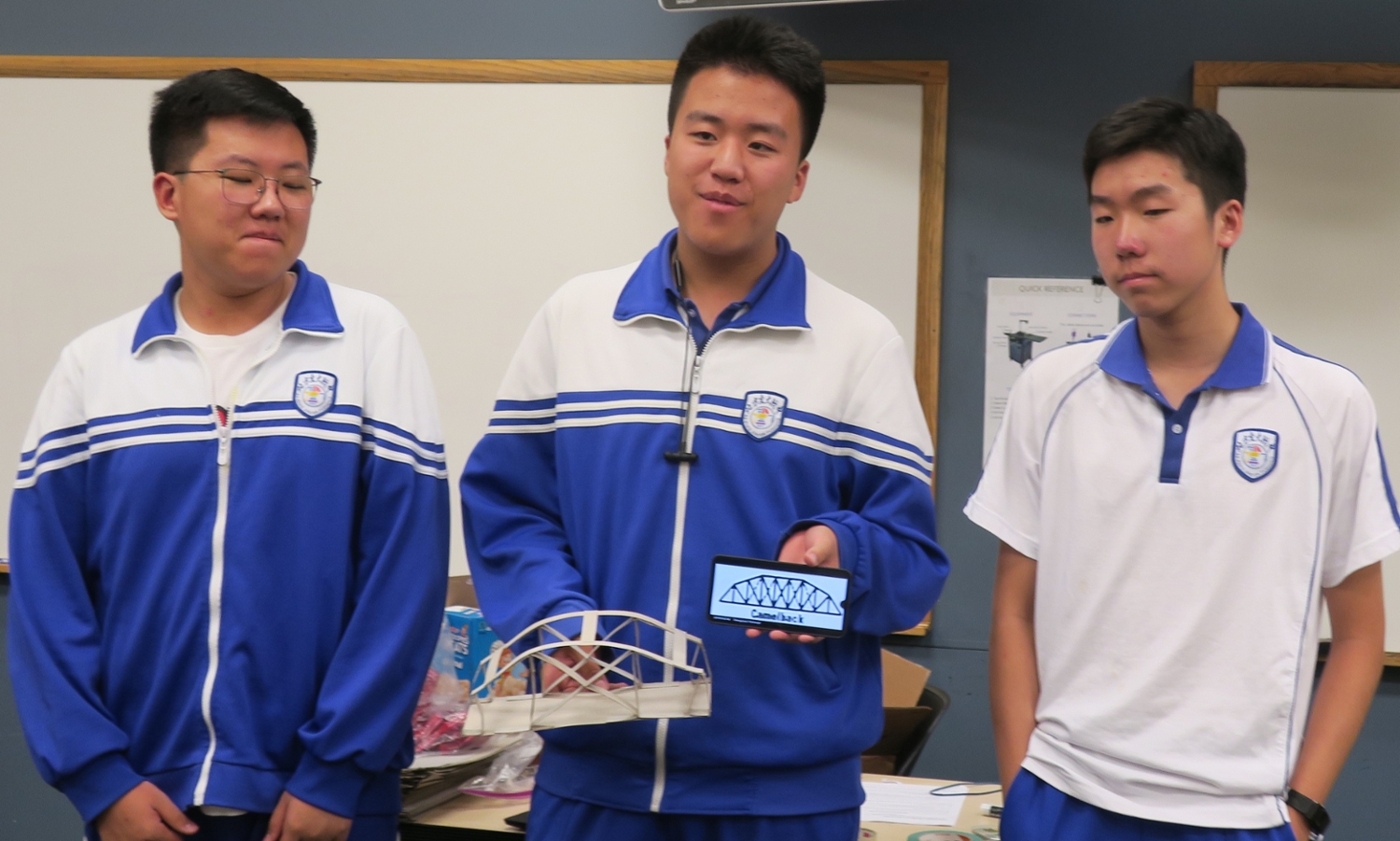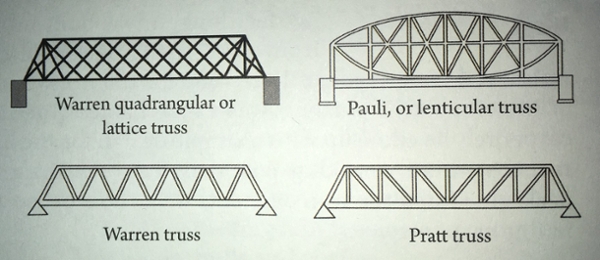Lesson title: 2D to 3D Truss Bridge Building

Brief Summary:
From Noyce, Pendred E, Engineering Bridges Connecting the World, Boston: Tumblehome, Inc., 2019:
Many different types of bridge designs have been developed, including beam, cantilever, arch, truss, suspension, pontoon or suspension. Within each category of bridge there are also several unique models. For this activity, students will learn about a variety of Truss Bridges [made up of various bracing bars arranged in stable triangles].
Within teams students will be challenged to build a bridge that will connect two very important sections of town. The mayor of the town has given the teams this task due to their mastery of essential computational skills, critical thinking processes, and creativity. As a team, students must make sure that their bridge is structurally sound, within budget, and has met all the constraints presented by the city (See constraints below).
Objectives: Students will be able to:
- study a 2-Dimensional drawing of a truss bridge [below, and included on the Constraints worksheet] and work with a team to construct a 3-Dimensional, preferably, freestanding structure that successfully meets the proposed constraints.

Materials:
- Cardboard/ cardstock
- Scissors
- Tape
- Ruler
- Instrument to weigh the bridge
- Items such as pennies to test the load bearing capacity of the bridges
- Middle School or High School Bridge Constraints page with Truss Bridge figures
Safety Concerns:
There are no major safety concerns for this lesson, outside of work with scissors.
Vocabulary:
- Truss: Bridge that features a support structure made up of straight beams arranged in rigid triangles, either above or below the deck. The support structure resists both compression and tension.
-
Fees: A payment made in exchange for a service
-
Compensation: Money received for completing a job
-
Constraint: Something that limits what you are able to do
-
Labor: Any type of work
-
Liaison: A person who helps with communication between groups
Suggested Timeframe (2 hours):
- Opening Question Discussion: 3 – 5 minutes
- Explanation of Project/Roles/Procedures: 10 minutes
- Brainstorming: 10 minutes
- Activity – Construction: 45 minutes to 1 hour
- Financial Calculations: 10 minutes
- Disposal Phase: 5 minutes
- Bridge Testing: 10 minutes
- Activity Debrief: 15 minutes
Procedure:
Construction
- Group students in teams of 4
- Read the challenge from the Mayor of the town: "Within your teams you have been given the task of building a bridge that will connect two very important sections of town. You have been selected for this task due to your mastery of essential computational skills, critical thinking processes, and creativity. As a team you must make sure that your bridge is structurally sound, within budget, and has met all the constraints presented by the city."
- Once in groups, have students do the following:
- Study the drawing and select which of the 2-Dimensional truss, from Figure 1, they will convert into a 3D model.
- Select the roles they will be responsible for: Bookkeeper, Materials Manager, Project Manager, or Financial Advisor
- In the event there are groups with more than 4, considering having several financial advisors as this may require additional attention.
- Review constrains and budget documents
- Answer any remaining questions and concerns
- Provide 10 minutes for students to work on their brainstorming
- Inform students that the project has begun and that they have 45 – 60 minutes to work.
- Provide two to three items comparable in weight to the item you selected to test on each bridge so that students may have access to a reference.
Once time has been called, all materials will be collected, and construction must end. This portion of procedures is only needed for those who will do the disposal phase of the project.
Disposal Procedures:
- Allot 5 additional minutes for the material managers to complete the Return/Disposal form
- Once the form has been completed, have the material manager bring the form and items for disposal
The teacher will then begin the test phase to discuss their findings and to hear the opinions of the other groups concerning their design.
Differentiation:
To simplify the activity:
- Consider removing “Disposal Fees” from the financial component.
- Modify pricing to better meet the current level of knowledge
To provide additional challenges:
- Consider having students select from a goodie bag of challenges:
- Test the strength of the bridge against the force of a small portable fan
- Which team can achieve the longest bridge that meets the constraints
- Have students alter their design depending on if the structure was:
- Over a gorge
- On uneven foundation
- Over a body of water where ships must pass through
- How does their design support this constraint? What would the group change?
- Consider including a consultation fee into the financial constraints of the activity.
- Consulting Fee: 105,000/$10 per question asked while the first question is answered at no cost.
- Once the instructions have been given, the instructor(s) become(s) a consultant. When students INITIATE A QUESTION about the design process or ask for recommendations, it is representative of the team agreeing to hire a consultant and will incur a consultation fee. However, instructors may provide insight freely without compensation. The situations will be treated as “Pro bono”, free, work.
- For transparency purposes, consider listing the teams on the board and place a tally mark when they ask a question.
- IF students are stuck and are afraid to ask, consider providing a whole group discussion to clear up any reoccurring questions, misconceptions, and concerns. The purpose of this project is to allow the students to have fun while taking ownership of their learning and the critical thinking skills.
Next Generation Science Standards Alignment:
-
Middle School
- MS-ETS1-1. Define the criteria and constraints of a design problem with sufficient precision to ensure a successful solution, taking into account relevant scientific principles and potential impacts on people and the natural environment that may limit possible solutions.
- MS-ETS1-2. Evaluate competing design solutions using a systematic process to determine how well they meet the criteria and constraints of the problem.
- MS-ETS1-3. Analyze data from tests to determine similarities and differences among several design solutions to identify the best characteristics of each that can be combined into a new solution to better meet the criteria for success.
- MS-ETS1-4. Develop a model to generate data for iterative testing and modification of a proposed object, tool, or process such that an optimal design can be achieved.
High School
- HS-ETS1-2. Design a solution to a complex real-world problem by breaking it down into smaller, more manageable problems that can be solved through engineering.
- HS-ETS1-3. Evaluate a solution to a complex real-world problem based on prioritized criteria and trade-offs that account for a range of constraints, including cost, safety, reliability, and aesthetics as well as possible social, cultural, and environmental impacts